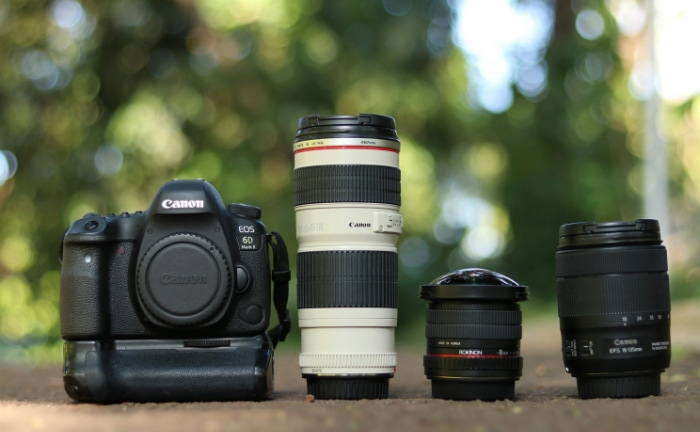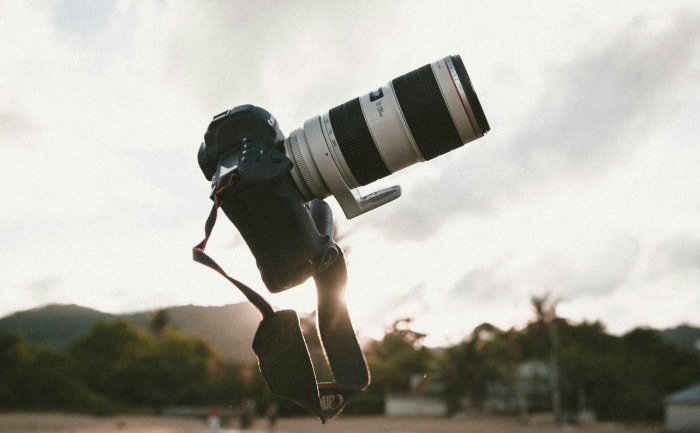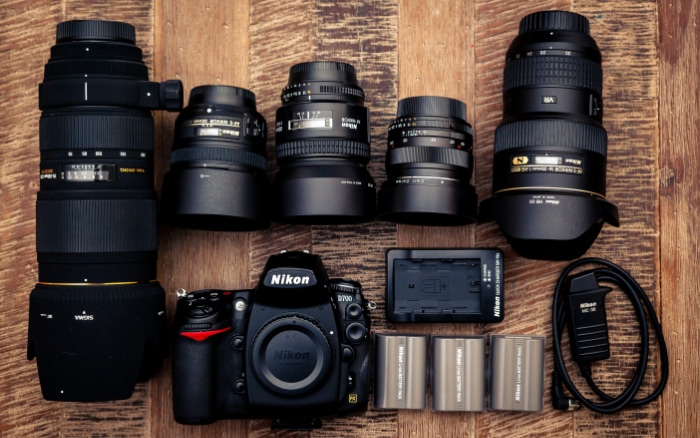Macro vs. Telephoto Lens: Capturing Worlds Apart

Capturing the perfect photograph is an art, blending technique with the right equipment to freeze moments into timeless pieces. Among the arsenal of tools available to photographers, lenses hold an essential role in shaping the visual story.
Two types of lenses, macro and telephoto, offer unique perspectives and capabilities, often leaving enthusiasts and professionals alike debating their merits. Macro lenses bring minute details to life, magnifying the beauty hidden in plain sight, while telephoto lenses compress distance, bringing distant subjects into sharp focus.
A Closer Look at Macro Lenses
Macro lenses are a fascinating tool in the photographer's kit, designed to capture small subjects with stunning detail. These lenses allow photographers to get up close to subjects, revealing textures and details often invisible to the naked eye.
From the intricate patterns on a butterfly's wings to the delicate droplets of dew on a flower petal, macro lenses offer a window into a world filled with minute wonders.
Key Characteristics of Macro Lenses
Macro lenses are distinguished by their ability to produce life-size or near-life-size images of subjects. This capability is often referred to in terms of magnification ratio, such as 1:1, which means the subject can be photographed at its actual size on the sensor.
This high magnification ratio is what allows photographers to capture extreme detail in their subjects.
Another important feature of macro lenses is their short minimum focusing distance. This means you can get the lens very close to the subject while still maintaining focus, a necessity for photographing small objects.
The Magnification Ratio Explained
The magnification ratio is a crucial aspect of macro photography. It refers to the relationship between the real size of the subject and the size of the image on the camera sensor.
A 1:1 magnification ratio means the image on the sensor is the same size as the subject in real life. Ratios greater than 1:1 indicate that the image is larger on the sensor than the subject, allowing for even greater detail capture.
Understanding this ratio helps photographers gauge how much detail and size they can capture with their macro lens, influencing the choice of subjects and the creative possibilities in macro photography.
Common Subjects for Macro Photography
Macro photography's beauty lies in its versatility and the new perspective it brings to ordinary objects. Common subjects include the natural world, like insects, flowers, and plants, where the intricate details are a constant source of fascination.
However, macro lenses are not limited to nature; they are also used to photograph everyday objects in stunning detail, such as the texture of fabric, the patterns on coins, or the components of a watch. This genre of photography encourages creativity and exploration, turning mundane objects into subjects of incredible beauty and interest.
The Wide World of Telephoto Lenses
Telephoto lenses are a staple in the photography world, known for their ability to zoom in on distant subjects and make them appear closer. These lenses are not just about bringing faraway scenes within reach; they also excel in creating stunning portraits with beautifully blurred backgrounds, emphasizing the subject against a soft backdrop.
Ideal for sports, wildlife, and event photography, telephoto lenses offer versatility and creative potential.
Definition and Key Features
Telephoto lenses have a longer focal length than standard lenses, typically starting from 70mm and extending beyond 300mm. This extended range allows photographers to capture images of distant subjects without physically moving closer.
The design of these lenses compresses the space between objects, creating a flattering effect for portraits and a dramatic impact for landscapes.
The Role of Focal Length
The focal length of a lens determines its angle of view and, consequently, how much of the scene will be captured. With telephoto lenses, the longer focal lengths reduce the angle of view, focusing on a smaller part of the scene.
This characteristic is what makes telephoto lenses ideal for focusing on specific subjects like a bird in flight or a football player on the field, isolating them from their environment.
Ideal Subjects for Telephoto Photography
Telephoto lenses shine in scenarios where the photographer cannot get close to the subject. Wildlife photographers rely on these lenses to capture detailed images of animals without disturbing them.
Similarly, sports photographers use telephoto lenses to freeze action-packed moments from a distance. Portrait photographers also benefit from the natural compression effect of telephoto lenses, which enhances the subject while simplifying the background.
Optical Quality and Performance

When diving into the realms of photography, the choice between macro and telephoto lenses is not just about the distance from the subject or the magnification. It's also about the nuances of optical quality and performance that these lenses offer.
Each lens type has its unique characteristics that affect how images are captured and rendered.
Image Sharpness and Clarity
Macro and telephoto lenses are engineered with precision to meet different photographic needs, which inherently affects their image sharpness and clarity. Macro lenses are designed to reproduce small subjects with life-like detail, offering unparalleled sharpness at close focusing distances.
This capability ensures that even the tiniest textures and patterns are captured with clarity.
Telephoto lenses, on the other hand, excel in bringing distant subjects closer, often prioritizing the ability to maintain image quality over long distances. While they may not match the extreme close-up sharpness of macro lenses, telephoto lenses are adept at reducing atmospheric haze and maintaining detail in faraway subjects, a testament to their optical design.
Aperture Settings and Depth of Field
Aperture settings play a crucial role in both macro and telephoto photography, influencing not only exposure but also depth of field—a critical aspect when aiming for artistic effects or focusing on specific subjects. Macro lenses typically offer wide apertures to allow more light, which is essential for close-up shots.
However, this comes with a shallow depth of field, making precise focus critical.
Telephoto lenses also benefit from wider apertures, especially in models designed for professional use. These apertures facilitate photography in various lighting conditions and help isolate the subject from the background by blurring it, a technique often used in portrait and wildlife photography.
Lens Design and Image Quality
The construction of macro and telephoto lenses, including the arrangement of elements and groups within, significantly influences their performance. Macro lenses are specially constructed to minimize optical aberrations like chromatic aberration and distortion at close distances, ensuring superior image quality for close-up shots.
Telephoto lenses, with their elongated physical design, incorporate specialized elements to correct for potential aberrations that can occur over longer distances. This includes the use of extra-low dispersion (ED) glass or aspherical elements to reduce chromatic aberration and ensure images remain sharp and clear, even when capturing subjects from afar.
Usage Scenarios and Flexibility
Choosing between a macro lens and a telephoto lens is like selecting the right tool for a specific job in photography. Each lens type shines in different scenarios, driven by its inherent characteristics and the creative goals of the photographer.
When to Use a Macro Lens
Macro lenses excel in capturing small subjects up close, such as insects, flowers, and detailed textures, where their ability to render life-size magnification comes to the forefront. These lenses are perfect for photographers looking to reveal the intricate details and beauty of small objects that are often overlooked.
Tips for Maximizing Macro Lens Use:
- Employ a tripod to stabilize your camera for sharp, detailed shots, especially in low light.
- Utilize the lens's shallow depth of field to isolate your subject against a soft, blurred background, drawing attention to the details.
- Experiment with lighting to enhance textures and colors in your close-up shots.
When to Use a Telephoto Lens
Telephoto lenses are ideal for subjects that are difficult to approach, such as wildlife, or for situations where you want to compress the scene and make distant objects appear closer, like in sports or landscape photography. These lenses also serve portrait photographers well, creating flattering images with beautifully blurred backgrounds.
Tips for Maximizing Telephoto Lens Use:
- For wildlife and sports, use a faster shutter speed to freeze motion, ensuring sharp images of fast-moving subjects.
- Use a lens with image stabilization to counteract camera shake, especially important at longer focal lengths.
- Explore different apertures to control the depth of field and highlight your subject against the background.
Choosing Between Macro and Telephoto Lenses
The decision to invest in a macro or telephoto lens hinges on your primary photography interests. If your passion lies in uncovering the minute wonders of the world, a macro lens will be your gateway to a universe of detail.
Conversely, if your focus is on capturing the majesty of distant subjects or the dynamic action of sports and wildlife, a telephoto lens will bring those distant scenes into clear view.
Considerations for Photographers:
- Assess the versatility of the lens. Some telephoto lenses offer a range that can cover moderate to extreme distances, while certain macro lenses can also function well for portraits or as general-purpose lenses.
- Reflect on your usual photography subjects and environments. Photographers who frequently shoot in varied conditions may value the flexibility of a telephoto lens, while those focused on studio or controlled settings might prefer a macro lens.
- Consider the future of your photography journey. Investing in lenses is a long-term decision, so think about how a lens will fit into your growing portfolio of work.
Additional Features and Considerations

Embarking on the quest for the perfect lens involves navigating through a sea of options, each with its unique advantages and tailored purposes. The decision to invest in either a macro or telephoto lens extends beyond mere preference; it reflects a commitment to a certain style of photography and a desire to excel in capturing either the vastness of distance or the intimacy of detail.
The Role of Image Stabilization
Image stabilization is a critical feature in both macro and telephoto lenses, albeit for different reasons. In macro photography, where the slightest movement can blur the minute details, image stabilization helps photographers capture sharp images at extreme close-ups.
This feature is particularly beneficial when shooting in natural light conditions where slower shutter speeds might be necessary.
For telephoto lenses, image stabilization is essential to counteract the effects of camera shake, a common issue when shooting at long focal lengths. This technology allows photographers to shoot handheld at slower shutter speeds without compromising on sharpness, making it invaluable for capturing distant subjects in varying lighting conditions.
Weight, Size, and Portability
The physical attributes of a lens—its weight, size, and portability—are crucial factors to consider, especially for photographers who travel or spend long hours in the field. Macro lenses, typically smaller and lighter than their telephoto counterparts, are easier to carry and maneuver, especially when space is limited or when working close to subjects.
Telephoto lenses, known for their longer barrels and heavier builds, can be more challenging to handle and transport. However, their design is a necessary trade-off for the extended reach and image quality they provide.
When choosing a telephoto lens, photographers should consider the balance between focal length and weight, especially if they plan to shoot without a tripod.
Price Range and Investment Considerations
The cost of lenses is a significant consideration for photographers, with prices varying widely based on factors like aperture size, image stabilization features, and brand reputation. Macro lenses, offering specialized close-up capabilities, can be more affordable than high-end telephoto lenses, which are priced for their complex optical systems and long reach.
When deciding between a macro or telephoto lens, photographers should consider their primary photography interests and whether the lens will fulfill their creative and technical requirements. Investing in a lens is not just about the immediate cost but also about the value it adds to one's photographic practice over time.
Whether capturing the intricate beauty of small subjects or bringing distant scenes closer, choosing the right lens involves weighing the benefits against the investment, ensuring that it aligns with one's artistic vision and budget.
Conclusion
Distinguishing between macro and telephoto lenses reveals a fascinating spectrum of photography's capabilities, from capturing the grandeur of landscapes to the intricate details of a dewdrop. Macro lenses excel in magnifying minute subjects, offering unparalleled detail and clarity for close-up photography.
On the other hand, telephoto lenses are masters of distance, bringing faraway scenes into sharp focus and beautifully compressing space for dramatic effect.
The choice of lens significantly influences the creative direction and technical possibilities of your photography. It hinges not just on the subjects you aim to capture but also on factors such as optical quality, aperture preferences, and even the physical aspects of the lens, like weight and size.
Moreover, considerations around image stabilization and investment further underscore the importance of aligning your choice with your photographic goals and lifestyle.
Embracing the diversity of lenses by experimenting with both macro and telephoto types can profoundly expand your skills and creative expression. Each lens offers a unique perspective on the world, encouraging photographers to see the extraordinary in the ordinary and the nuanced details of distant horizons.
This journey of discovery not only enhances technical proficiency but also enriches the artistic soul, inviting photographers to continually explore the boundless possibilities of their craft.


